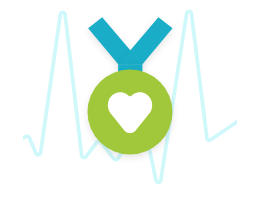In our 2021 benefits survey, we found that 52% of United States organizations offer some form of wellness program to their employees. These programs have the potential to generate savings and improve employee health through the promotion of healthier lifestyles, but not all benefits are created equal.
Too often, wellness programs fall short, resulting in poor utilization and fragmented care. Let’s take a look at the pros and cons of five common corporate wellness programs.
Fitness centers and club memberships
Fitness center discounts were once the most requested health-related benefit, but everything looks different after COVID-19. Now a full 25% of physically fit employees say they’ll never return to a gym — and 42% of the same polling group prefer a home-gym setup to similar employer-provided perks. One recent study found that, “Eight in 10 Americans agree that the pandemic ruined their motivation to go to the gym or work out regularly.”
Pros:
- Lower barrier to fitness access
- Promotes increased physical activity, which can lead to better productivity and focus at work
- Encourages healthy lifestyles
Cons:
- Risks underutilization of benefits: Onsite fitness facilities were a costly liability before COVID-19; now they have the added challenge of being even less in demand
- Appeals primarily to employees who are already physically fit and inclined to participate in this form of exercise
 Nutritional education
Nutritional education
Researchers found, in a survey of 15 million patients, that 39% put on weight during the pandemic. Whether employees work from home, onsite, or within a hybrid model, maintaining healthy eating habits improves their productivity, health, and happiness. Nutritional education remains a cost-effective opportunity to encourage the formation of these habits — no matter where employees work and eat.
Pros:
- Allows employees to achieve healthier weights (and reduce healthcare costs)
- Encourages healthy choices and lifestyles
- Potentially an effective and low-cost wellness program option
Cons:
- Employees resistant to change don't have the support and tools they need to succeed
Health screenings and health risk assessments
The most recent Kaiser Family Foundation survey found that organizations are beginning to take a closer look at their health screening and risk assessment offerings. With the hope of achieving better results, 32% of small organizations and 43% of large organizations have made adjustments to their available biometric screening programs since the beginning of the pandemic.
Pros:
- Identifies health risks connected to choices, histories, habitual behaviors, and more
- Evidence-based support can be recommended
- Helps employees become accustomed to monitoring their own health
Cons:
- Is generally ineffective when disconnected from a comprehensive care plan
- Does not require employees to take any immediate action to improve their health
- Employers must be careful not to violate HIPAA, GINA, or ADA standards
 Fitness and health competitions
Fitness and health competitions
The results of employer-sponsored fitness and health competitions can be difficult to quantify beyond anecdotal stories. It’s best to consider the pros and cons of this incentive in light of your professional culture.
Pros:
- Creates friendly competition which encourages engagement
- Boosts morale and adds fun to health goals
- Leads to goal-setting and accountability
Cons:
- Sustaining participation and enthusiasm can be difficult
- May be isolating for uncompetitive people or foster unintended resentment based on varied results
- Liability of employee injuries during a company-sponsored event
Mindfulness apps
Burnout is increasingly common in modern workplaces and many employers are turning to mindfulness apps to support the mental health of their employees and boost productivity while reducing stress.
Pros:
- Reinforces the positive impact of meditation and mindfulness on physical health and well-being
- Provides employees with opportunities to reduce their distractions and stress
- Encourages healthy sleep habits, with some apps providing tools to improve quality of sleep
Cons:
- Regular, disciplined practice can be difficult to achieve without accountability
- Lack of relational, human support can prevent people from accomplishing their mindfulness goals
Behavior change is key
These five wellness programs all have one thing in common: They rely on behavior change to be effective. From nutritional education to mindfulness apps, employee engagement is key to the success of any health and wellness program.
Knowing that behavior change cannot be prescribed, we’ve crafted our advanced primary care (APC) model around building close patient-provider relationships, where patients are encouraged to take greater ownership of their health goals and improve their lifestyles through daily changes. Professional health coaches are also available (through virtual or in-person appointments at every Vera care center) to offer support, empathy, and privacy as patients move through the five stages of change.
Our partnership with Castlight Health will boost employee engagement and satisfaction even more. A patient’s ability to access a digital front door means they have greater control over their healthcare journey and digital support in taking proactive steps to improve their well-being.
We don’t think in terms of which wellness program is right and which is wrong. Instead, we’re focused on helping employees achieve lasting wellness through our proven APC model and with Castlight’s digital front door. The health and well-being of your employees is a constant focus.
Instead of paying for a gym membership, a nutritional education program, or a fitness competition, your organization can choose APC to significantly improve health, boost well-being, and consolidate benefits. With behavior change integrated into our model, your employees have the greatest chance of achieving outcomes that last.

Editor's Note: This is an updated version of the original post published on July 21, 2021.